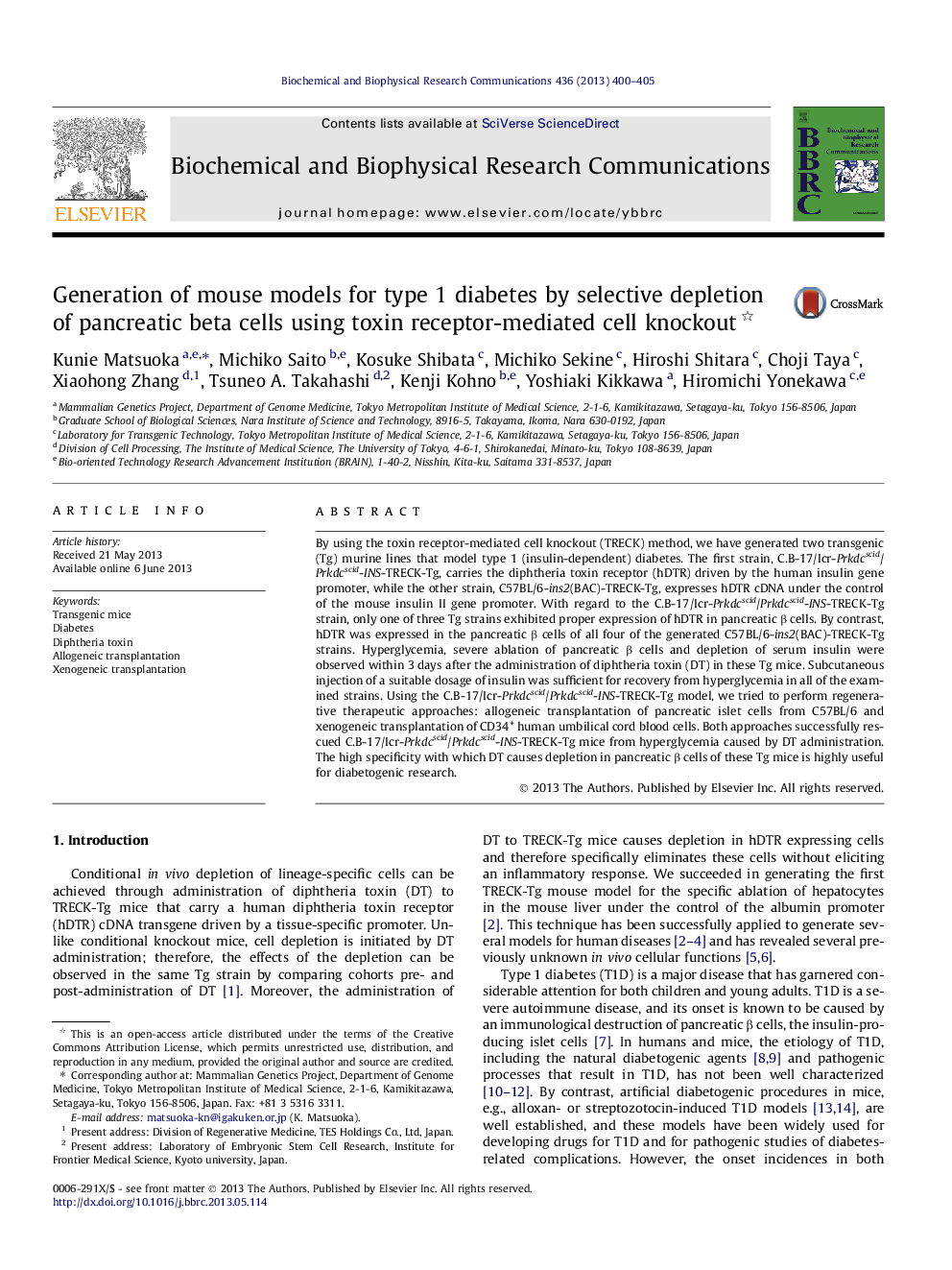| Article ID | Journal | Published Year | Pages | File Type |
|---|---|---|---|---|
| 10758734 | Biochemical and Biophysical Research Communications | 2013 | 6 Pages |
Abstract
By using the toxin receptor-mediated cell knockout (TRECK) method, we have generated two transgenic (Tg) murine lines that model type 1 (insulin-dependent) diabetes. The first strain, C.B-17/Icr-Prkdcscid/Prkdcscid-INS-TRECK-Tg, carries the diphtheria toxin receptor (hDTR) driven by the human insulin gene promoter, while the other strain, C57BL/6-ins2(BAC)-TRECK-Tg, expresses hDTR cDNA under the control of the mouse insulin II gene promoter. With regard to the C.B-17/Icr-Prkdcscid/Prkdcscid-INS-TRECK-Tg strain, only one of three Tg strains exhibited proper expression of hDTR in pancreatic β cells. By contrast, hDTR was expressed in the pancreatic β cells of all four of the generated C57BL/6-ins2(BAC)-TRECK-Tg strains. Hyperglycemia, severe ablation of pancreatic β cells and depletion of serum insulin were observed within 3 days after the administration of diphtheria toxin (DT) in these Tg mice. Subcutaneous injection of a suitable dosage of insulin was sufficient for recovery from hyperglycemia in all of the examined strains. Using the C.B-17/Icr-Prkdcscid/Prkdcscid-INS-TRECK-Tg model, we tried to perform regenerative therapeutic approaches: allogeneic transplantation of pancreatic islet cells from C57BL/6 and xenogeneic transplantation of CD34+ human umbilical cord blood cells. Both approaches successfully rescued C.B-17/Icr-Prkdcscid/Prkdcscid-INS-TRECK-Tg mice from hyperglycemia caused by DT administration. The high specificity with which DT causes depletion in pancreatic β cells of these Tg mice is highly useful for diabetogenic research.
Keywords
Related Topics
Life Sciences
Biochemistry, Genetics and Molecular Biology
Biochemistry
Authors
Kunie Matsuoka, Michiko Saito, Kosuke Shibata, Michiko Sekine, Hiroshi Shitara, Choji Taya, Xiaohong Zhang, Tsuneo A. Takahashi, Kenji Kohno, Yoshiaki Kikkawa, Hiromichi Yonekawa,
